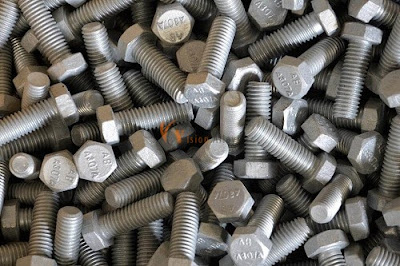Types of Stainless Steel
Stainless steel refers to a family of iron-based alloys that must include at least 10.5% chromium and may also contain nickel, manganese, molybdenum, sulphur, selenium, titanium, and other alloying elements. Table 2 may be found on page 3. The chromium is primarily responsible for the corrosion and heat resistance of stainless steel; the other alloying elements are present in stainless steel to further enhance the material's resistance to corrosion as well as to impart certain characteristics regarding the material's strength and its ability to be fabricated.
The American Iron and Steel Institute (AISI) first acknowledged as standard compositions a total of sixty different commercial varieties of stainless steel. Design Guidelines for the Selection and Use of Stainless Steel is a document by SSINA that contains a comprehensive inventory of all stainless steels as well as a description of each. The United States and Canada are responsible for the production of a wide variety of specialty analyses and custom stainless steels, in addition to the conventional AISI varieties.
IDENTIFICATION
The vast majority of AISI stainless steels may be recognised by a numbering system that falls into the 200, 300, or 400 Series. In addition, the Unified Numbering System is used to identify each one of them (UNS). For instance, the UNS designation for type 304 is type S30400 fasteners. Trade names are used to identify special analytical stainless steels and proprietary stainless steels, and some of these trade names may mimic AISI numbers.
There are five basic categories of stainless steel, which are as follows: Hardening, precipitation, austenitic, martensitic, ferritic, duplex, and precipitation Each has a unique metallurgical structure, which in turn reflects a distinct set of qualities with regard to how well it resists corrosion, how easily it can be hardened, and how easily it can be fabricated.
AUSTENITIC
Stainless steels are either chromium-nickel-manganese or chromium-nickel compositions, with the latter being designated by numbers in the 200 Series and the former by numbers in the 300 Series. They can only be made more durable via the use of cold work, and in their annealed state, they are magnetically inert. The alloy known as Type 304 SS Fasteners is representative of the austenitic group since it has a standard content of 18% chromium and 8% nickel (thus the name 18-8.
FERRITIC
Stainless steels are straight-chromium steels of the 400 Series that cannot be hardened by heat treatment and can only be hardened to a very minor degree by cold working. All are magnetic. The 430 type is representative of this whole group. MARTENSITIC stainless steels are those in the 400 Series that are chromium-free and may be 2 or 3 Figure 1a METALLURGICAL METAL FLOW FOR MACHINED MATERIALS Figure 1b shows the metallurgical metal flow for cold-headed materials that have just been heat-treated to become more brittle. All are magnetic. The Type 410 best represents this group as a whole.
PRECIPITATION HARDENING
The combination of an ageing treatment at a low temperature and cold working may make stainless steels harder than they initially were. The sole way to identify an AISI type is by its associated UNS number, such as Type S17400; however, many of these types are also referred to in the literature by their own proprietary trade names, such as 17- 4PH. Because the fabrication process can be finished in an annealed state while still achieving uniform hardening, precipitation-hardening stainless steels are particularly useful. This is because uniform hardening can be achieved without the need for a high-temperature treatment, which can lead to distortion and scaling.
DUPLEX
Stainless steels are distinguished by their structures, which are composed of 50% austenitic and 50% ferritic elements. This composition enables stainless steels to possess the same level of corrosion resistance as austenitic grades of material while also giving greater design qualities.
SUPER-AUSTENITIC
When dealing with chloride conditions that are hostile, stainless materials are a good option to take into account. They contain larger concentrations of nickel and molybdenum, which contributes to increased resistance to pitting and corrosion in crevices.
These are the various types of Stainless Steel . We provide the best quality of Stainless Steel 304 Fasteners. Click here and findout your best Stainless Steel Fasteners for your applications.
.png)


.png)
Comments
Post a Comment